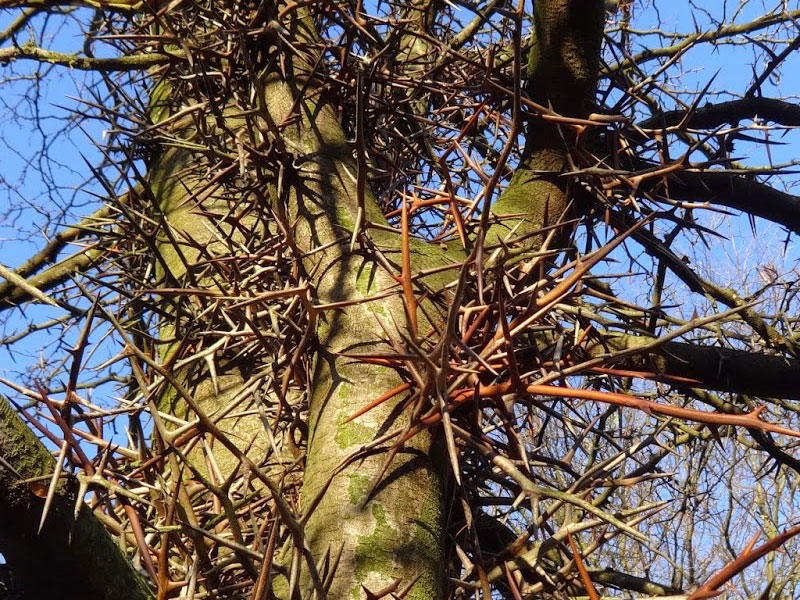Honey Locust (Gleditsia triacanthos)
The Honey Locust is deciduous, spreading tree 15 to 20 metres tall. The trunk and branches have vicious, three-branched spines. The leaves are bright green, bi-pinnate, lance-shaped and minutely toothed. Small, yellowish-green flowers appear from October to November. The seed capsules are flat and twisted brown pods.
